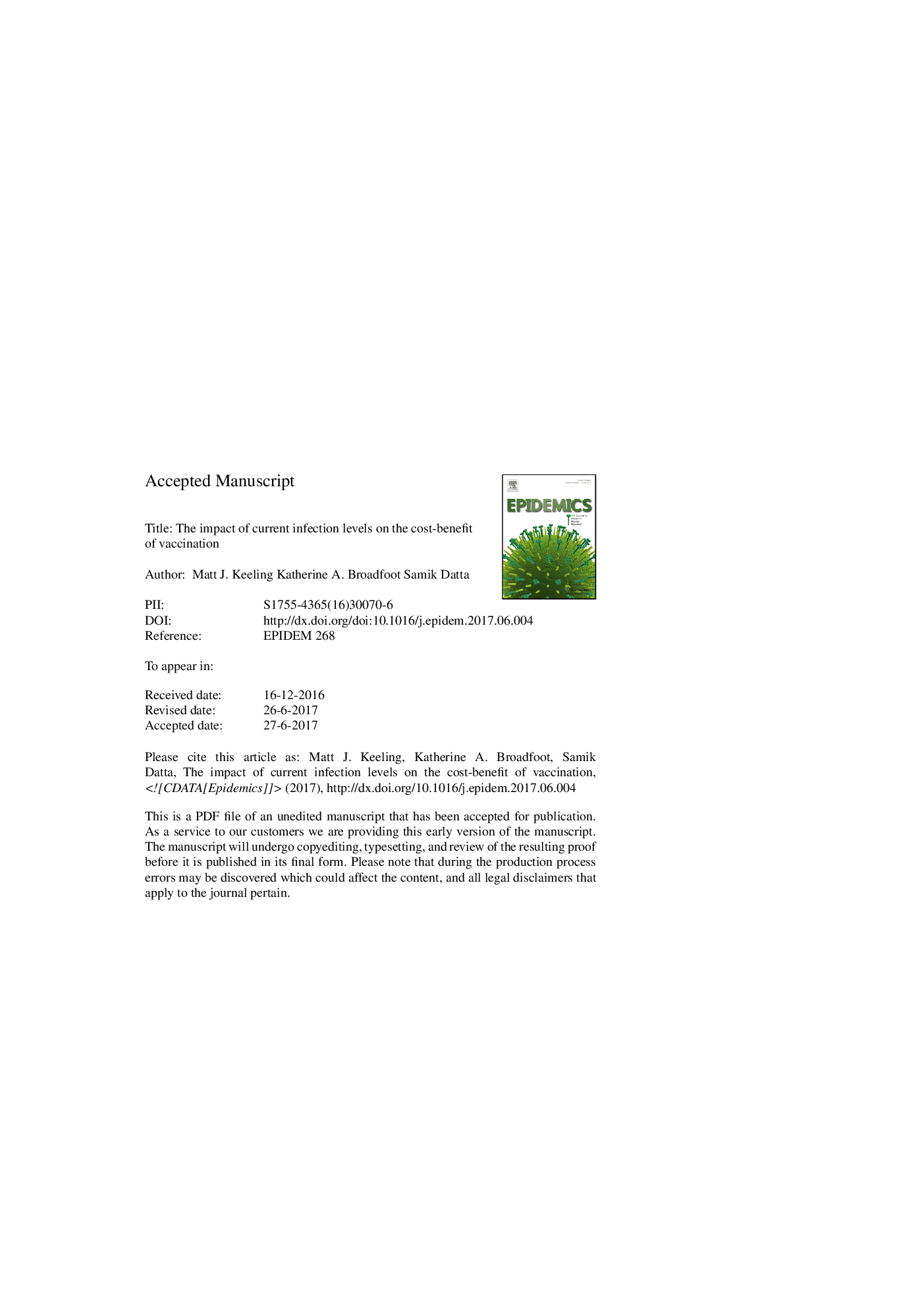| کد مقاله | کد نشریه | سال انتشار | مقاله انگلیسی | نسخه تمام متن |
|---|---|---|---|---|
| 8644195 | 1569426 | 2017 | 24 صفحه PDF | دانلود رایگان |
عنوان انگلیسی مقاله ISI
The impact of current infection levels on the cost-benefit of vaccination
ترجمه فارسی عنوان
تأثیر آلودگی های جاری بر میزان هزینه واکسیناسیون
دانلود مقاله + سفارش ترجمه
دانلود مقاله ISI انگلیسی
رایگان برای ایرانیان
کلمات کلیدی
موضوعات مرتبط
علوم زیستی و بیوفناوری
علوم کشاورزی و بیولوژیک
بوم شناسی، تکامل، رفتار و سامانه شناسی
چکیده انگلیسی
When considering a new vaccine programme or modifying an existing one, economic cost-benefit analysis, underpinned by predictive epidemiological modelling, is a key component. This analysis is intimately linked to the willingness to pay for additional QALYs (quality-adjusted life-years) gained; currently in England and Wales a health programme is economically viable if the cost per QALY gained is less than £ 20,000, and models are often used to assess if a vaccine programme is likely to fall below this threshold cost. Before a programme begins, infection levels are generally high and therefore vaccination may be expected to have substantial effects and therefore will often be economically viable. However, once a programme is established, and infection rates are lower, it might be expected that a re-evaluation of the programme (using current incidence information) will show it to be less cost-effective. This is the scenario we examine here with analytical tools and simple ODE models. Surprisingly we show that in most cases the benefits from maintaining an existing vaccination programme are at least equal to those of starting the programme initially, and in the majority of scenarios the differences between the two are minimal. In practical terms, this is an extremely helpful finding, allowing us to assert that the action of immunising individuals does not de-value the vaccination programme.
ناشر
Database: Elsevier - ScienceDirect (ساینس دایرکت)
Journal: Epidemics - Volume 21, December 2017, Pages 56-62
Journal: Epidemics - Volume 21, December 2017, Pages 56-62
نویسندگان
Matt J. Keeling, Katherine A. Broadfoot, Samik Datta,
